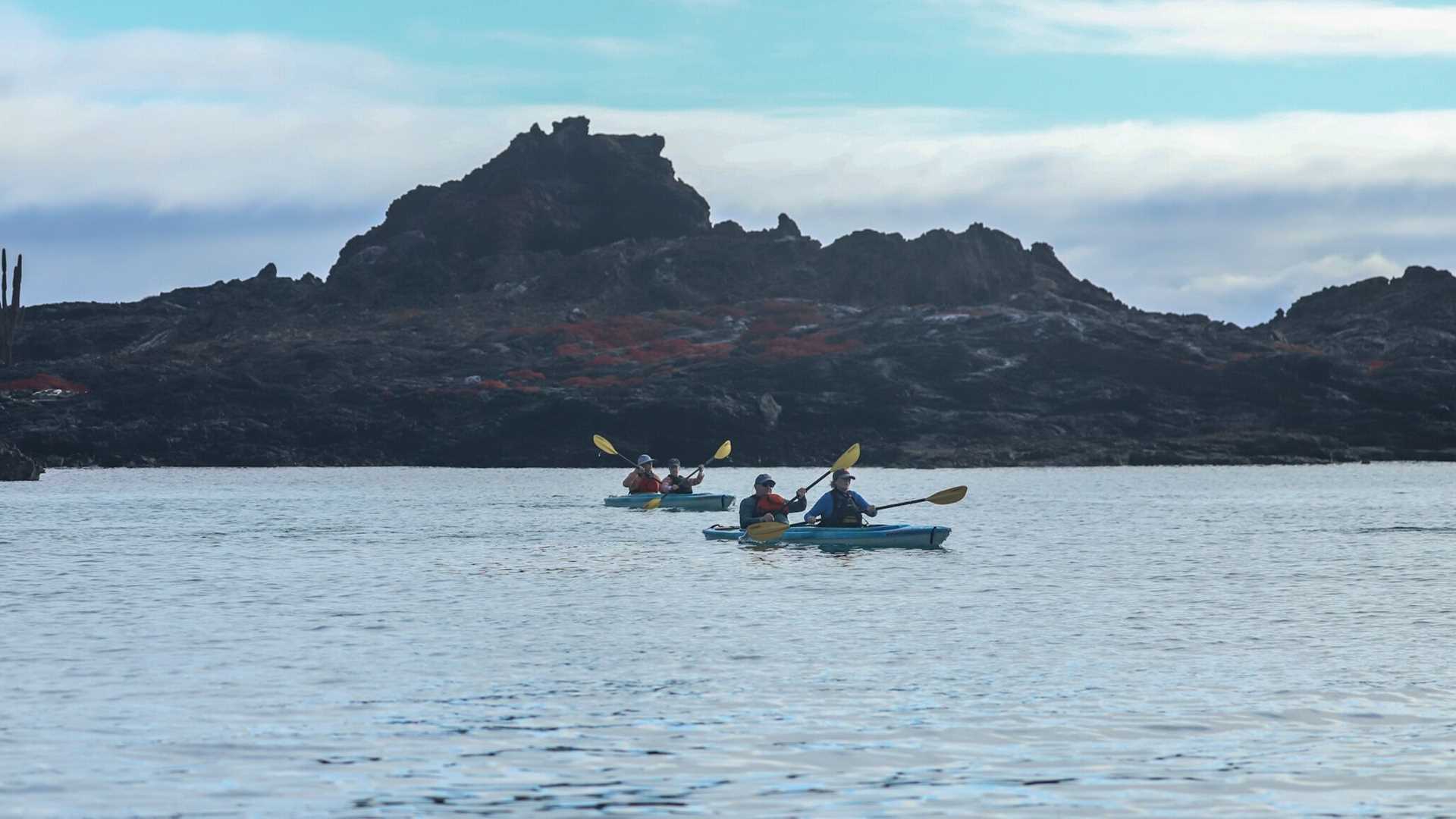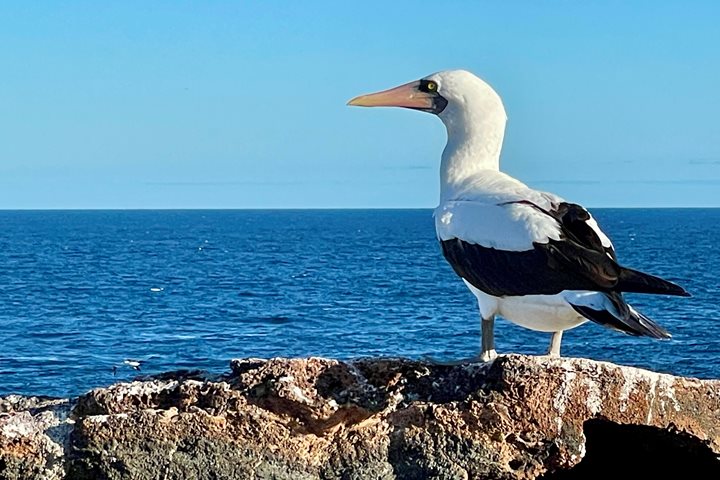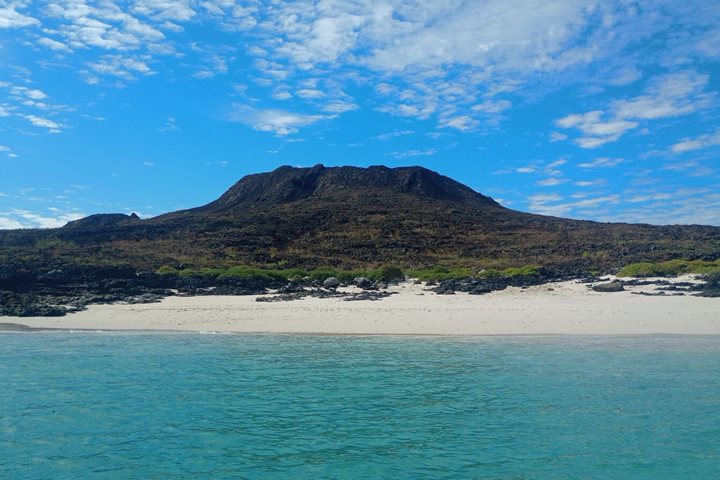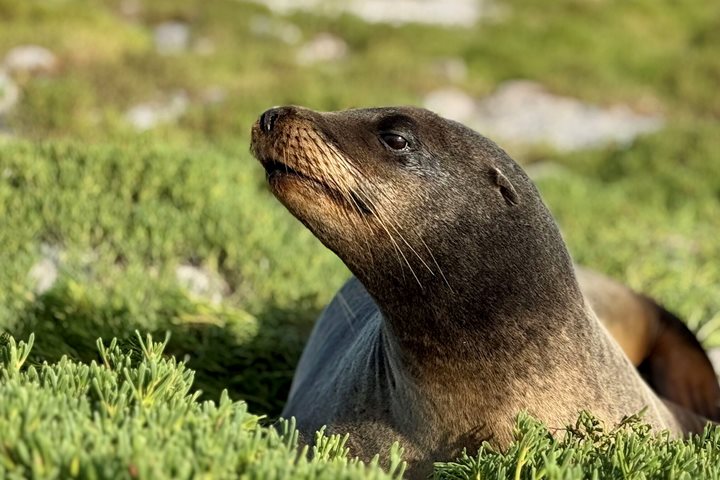We are halfway through our expedition in the Galápagos Islands. Today, we explored Sombrero Chino and Santiago Island before breakfast. We began our first kayaking around the peaceful turquoise waters that separate Chinese Hat from Santiago Island. During marine activities later in the morning, we encountered penguins feeding on small fish, blue-footed boobies, sea lions, and pelicans along the shores.
In the afternoon, we headed towards Sullivan Bay on Santiago Island to walk on relatively new lava, the result of a volcanic eruption in 1897. We found pioneer plants and lava lizards, which made us imagine what these islands were like millions of years ago when they first emerged from the ocean.
Our day ended with an incredible sunset in the Enchanted Islands.







